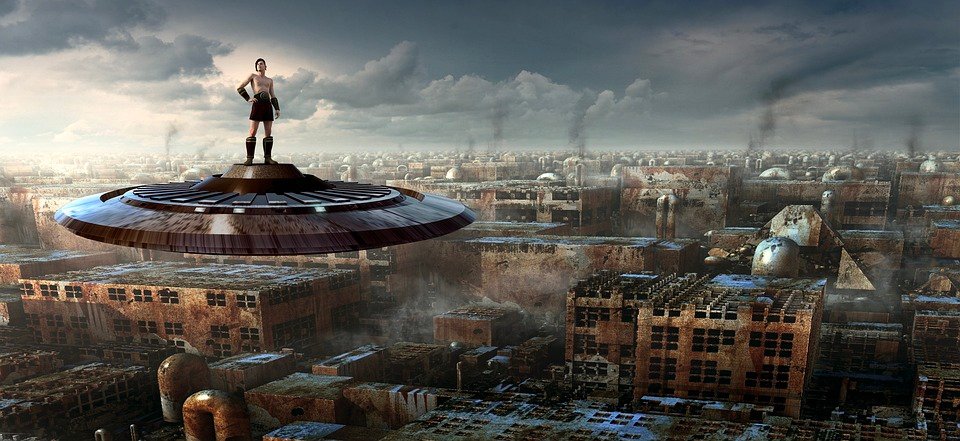The Young Earth Hoax: How it Undermines Scientific Progress and Education
Introduction
Scientific progress and education are fundamental pillars of modern society. They drive innovation, improve our understanding of the world, and shape the future. However, there are certain beliefs and ideologies that undermine scientific progress, one of which is the Young Earth Hoax.
Understanding the Young Earth Hoax
The Young Earth Hoax refers to the belief that the Earth is only a few thousand years old, contrary to overwhelming scientific evidence supporting an age of approximately 4.5 billion years. This belief is often rooted in religious interpretations, specifically biblical literalism.
Advocates of the Young Earth Hoax reject various scientific disciplines, including geology, astronomy, paleontology, and radiometric dating methods, which provide substantial evidence for an ancient Earth. They maintain that the Earth’s age can be accurately determined by biblical genealogies, leading to a fixed, young Earth timeline.
The Undermining of Scientific Progress
The Young Earth Hoax hinders scientific progress in multiple ways:
1. Denial of Established Scientific Principles
The Young Earth Hoax denies well-established scientific principles, such as the theory of evolution, which is supported by vast amounts of evidence. By rejecting these principles, advocates of the hoax hinder scientific advancements in fields such as biology, genetics, and medicine.
2. Disregard for Geological and Astronomical Discoveries
Geological and astronomical discoveries provide crucial insights into the Earth’s history and the universe at large. The Young Earth Hoax dismisses these findings as mere misinterpretations or distortions of data, preventing further exploration and understanding of our planet and the cosmos.
3. Distortion of Scientific Education
By promoting the Young Earth Hoax, scientific education is undermined. It creates confusion among students, as they are exposed to conflicting information. The teaching of well-established scientific concepts becomes compromised, hindering critical thinking and fostering a distrust in scientific authorities.
4. Stagnation of Scientific Curiosity
Scientific progress thrives on curiosity and the pursuit of knowledge. However, the Young Earth Hoax discourages critical examination and investigation of the natural world. It inhibits scientists from exploring new theories, conducting innovative experiments, and pushing the boundaries of human understanding.
The Impact on Education
The Young Earth Hoax not only undermines scientific progress but also hampers science education:
1. Creation of a False Dichotomy
Advocates of the Young Earth Hoax often present it as an alternative scientific theory to evolution and the Big Bang theory. This false dichotomy misleads students, who may be exposed to this belief alongside established scientific principles. It creates confusion and presents a distorted view of the scientific consensus.
2. Polarization of Debates
Debates surrounding the Young Earth Hoax can become polarized, resulting in a contentious atmosphere. This polarization can discourage open dialogue, critical thinking, and the exploration of different perspectives. It limits students’ exposure to a range of scientific ideas and the ability to form well-informed opinions based on evidence.
3. Inadequate Science Curriculum
The inclusion of the Young Earth Hoax in science curricula compromises the quality of education. By giving it equal weight to well-established scientific principles, students may receive an incomplete or distorted understanding of scientific concepts. This can hinder their ability to pursue higher education or careers in scientific fields.
FAQs
Q1: What is the scientific consensus on the age of the Earth?
Scientists from various disciplines, such as geology, astronomy, and paleontology, overwhelmingly agree that the Earth is approximately 4.5 billion years old. This consensus is based on extensive evidence gathered through radiometric dating methods, geological formations, and astronomical observations.
Q2: Why do some people still believe in the Young Earth Hoax?
There are multiple reasons why individuals continue to believe in the Young Earth Hoax. For some, it aligns with their religious beliefs and interpretations of scripture. Others may distrust scientific institutions or feel that the hoax provides a sense of certainty or simplicity in understanding the world.
Q3: Does the Young Earth Hoax have any scientific evidence to support it?
No, the Young Earth Hoax lacks credible scientific evidence. Its proponents often misinterpret or dismiss scientific data that contradict their beliefs. The overwhelming consensus within the scientific community supports an ancient Earth, as supported by numerous lines of evidence.
Q4: How does the Young Earth Hoax impact scientific research?
The Young Earth Hoax hampers scientific research by discouraging scientists from pursuing certain areas of study that may challenge or contradict the hoax. It also diverts resources and attention away from more promising scientific endeavors, hindering overall scientific progress.
Q5: What can be done to address the Young Earth Hoax?
Addressing the Young Earth Hoax requires a multifaceted approach. It involves promoting science education that emphasizes critical thinking and evidence-based reasoning. Encouraging open dialogue, respectful debates, and providing accurate scientific information can help counter the spread of the hoax.
Conclusion
The Young Earth Hoax undermines scientific progress and education, hindering our understanding of the world and impeding the pursuit of knowledge. By dismissing well-established scientific principles and promoting a distorted view of the Earth’s age, this belief system inhibits scientific curiosity, stagnates advancements, and compromises the quality of education. It is crucial to promote accurate scientific education and foster critical thinking to counter the detrimental effects of the Young Earth Hoax on society as a whole.

